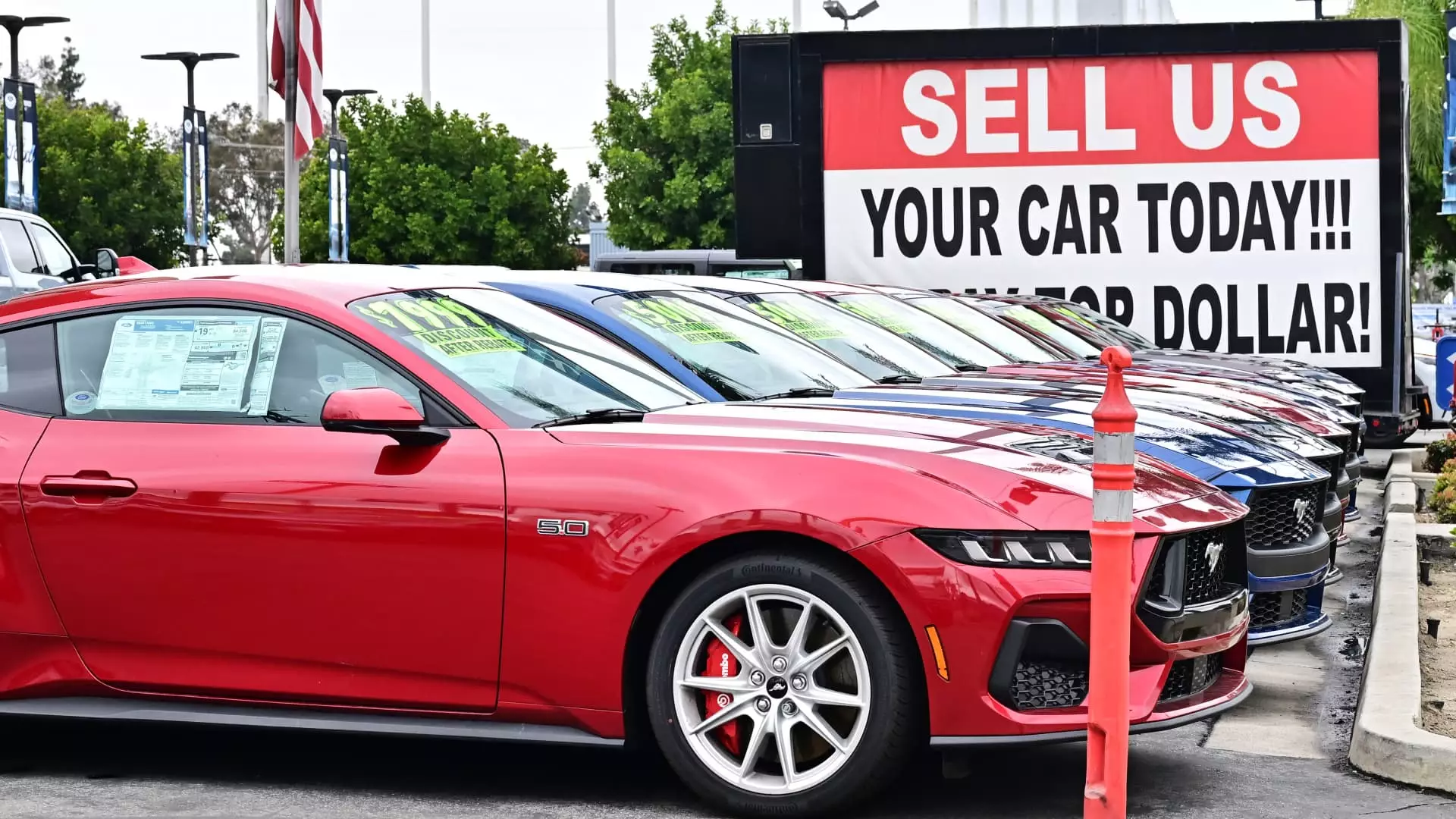In a significant pivot from the earlier continuous rise, recent figures indicate that used car prices in May have declined by 1.5% from the previous month’s record highs. While this drop may seem negligible, it raises critical questions about the underlying factors influencing the used car market—a sector that millions of Americans depend on for transportation. The Manheim Used Vehicle Value Index, tracking auction prices of used cars, reveals that even amidst this decline, prices remain a robust 4% higher than they were just a year prior. This complex reality calls for deeper scrutiny because it masks the true instability hidden beneath the surface.
Consumer Behavior and Market Manipulation
Interestingly, the dip in prices corresponds to a pronounced consumer response to anticipated tariffs under the previous administration. Many Americans, wary of potential spikes in costs due to tariffs on new vehicles, gravitated towards the used market. This knee-jerk reaction can be interpreted not merely as a response to supply and demand dynamics but as a desperate measure to avert financial strain. However, one must question whether such behavior is sustainable in the long run. As consumers cling to their vehicles longer, and with the automotive production industry still grappling with pandemic-induced supply chain issues, an illusion of stability emerges—a façade that could shatter at any moment.
The Ripple Effect of Tariffs and New Vehicle Prices
While tariffs directly imposed on new vehicle imports do not affect used vehicle sales, the broader implications of these tariffs seep into the market. The new car segment witnesses cascading effects in production costs, which, in turn, manipulate demand for used vehicles. Consequently, we find ourselves entrapped in a cycle where the health of the used car market is tied to the faltering new vehicle sector—a perplexing interdependence that reflects the chaotic nature of our current economy. As Jeremy Robb from Cox Automotive pointed out, “While wholesale appreciation trends were remarkably strong in April, the market gave some of that strength back in May.” This statement underscores a vulnerability in the perceived stability of used car prices.
Supply and Demand: Are the Shelves Drying Up?
Inventory levels for used vehicles rest at a meager 2.2 million—a stark contrast to historical averages. This scarcity has a twofold impact: it initially inflates prices but simultaneously presents an obstacle for buyers seeking affordable options. The current environment breeds frustration among a populace already strained by economic uncertainty exacerbated by the pandemic.
Amid these challenges, it is imperative to consider customer experiences. With retail prices lagging behind wholesale declines, the average American consumer finds themselves in a precarious position—caught between rising costs, shrinking inventories, and an uncertain economic climate. Therefore, should we celebrate the recent decrease in used car prices, or view it as a mere indicator of fluctuating economic realities that continue to test the resilience of the average American?
In this contentious and fluctuating landscape, one thing remains clear: the complexities of the used vehicle market are reflective of broader systemic issues prevalent in our economy that demand urgent attention.


Leave a Reply